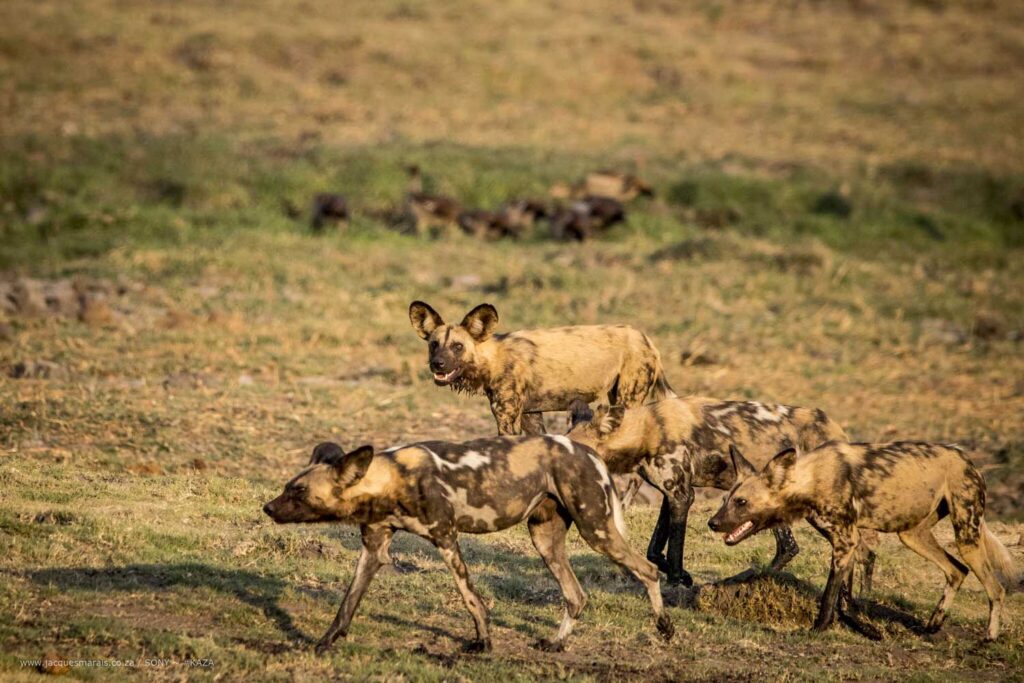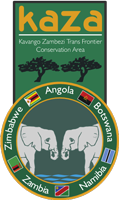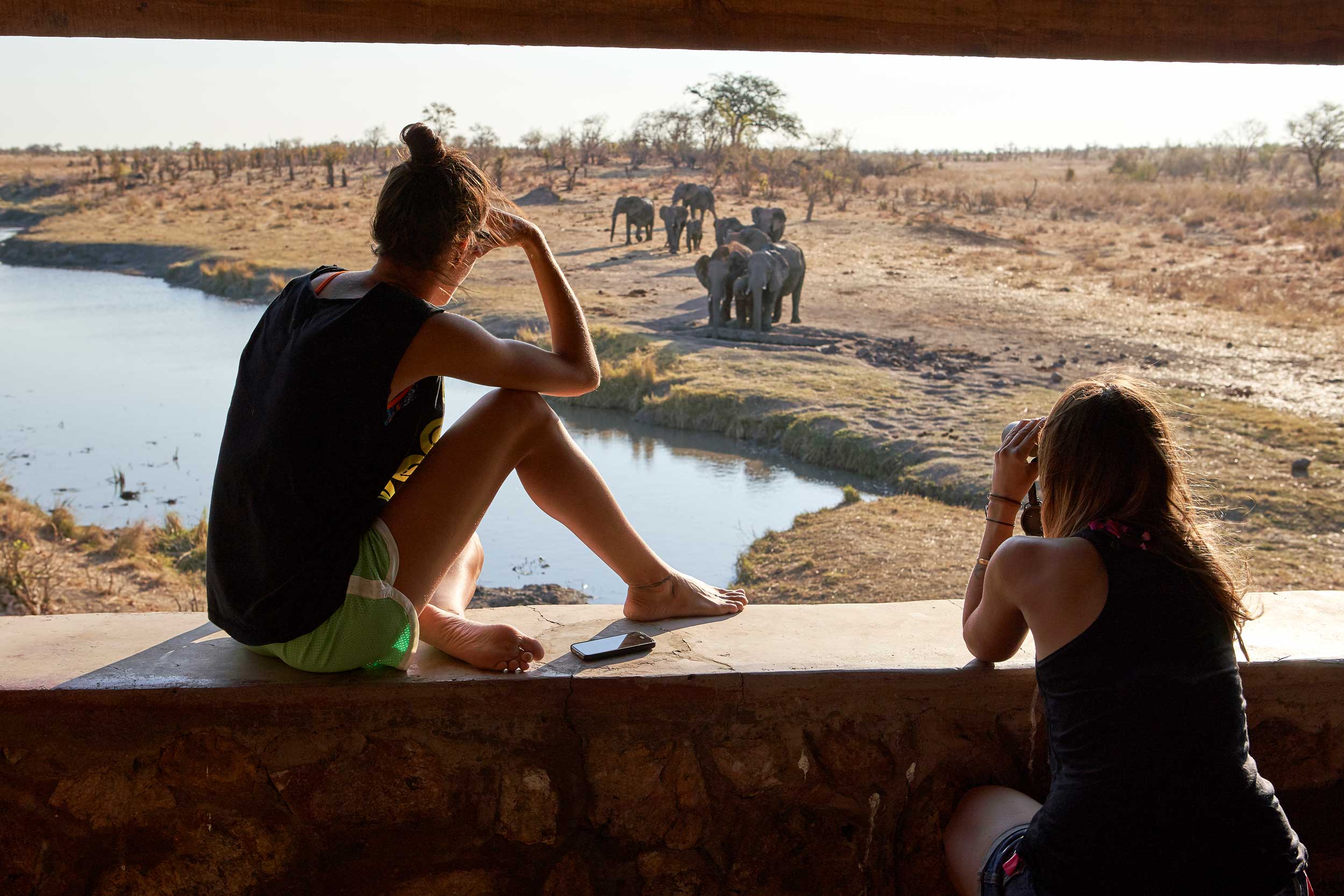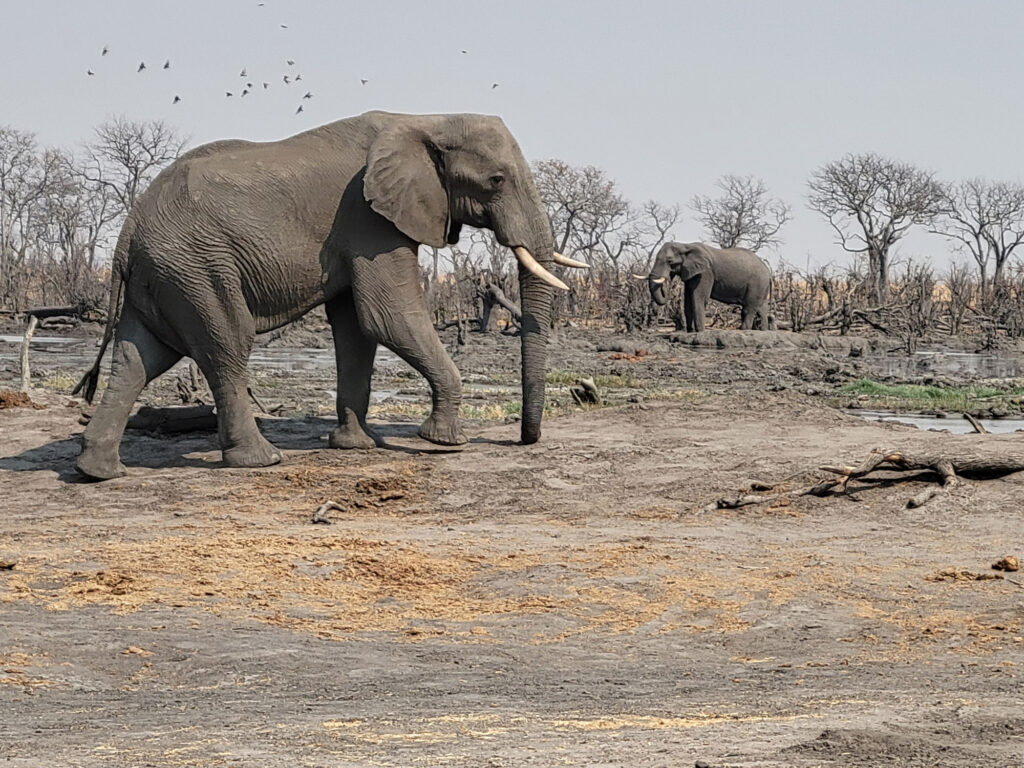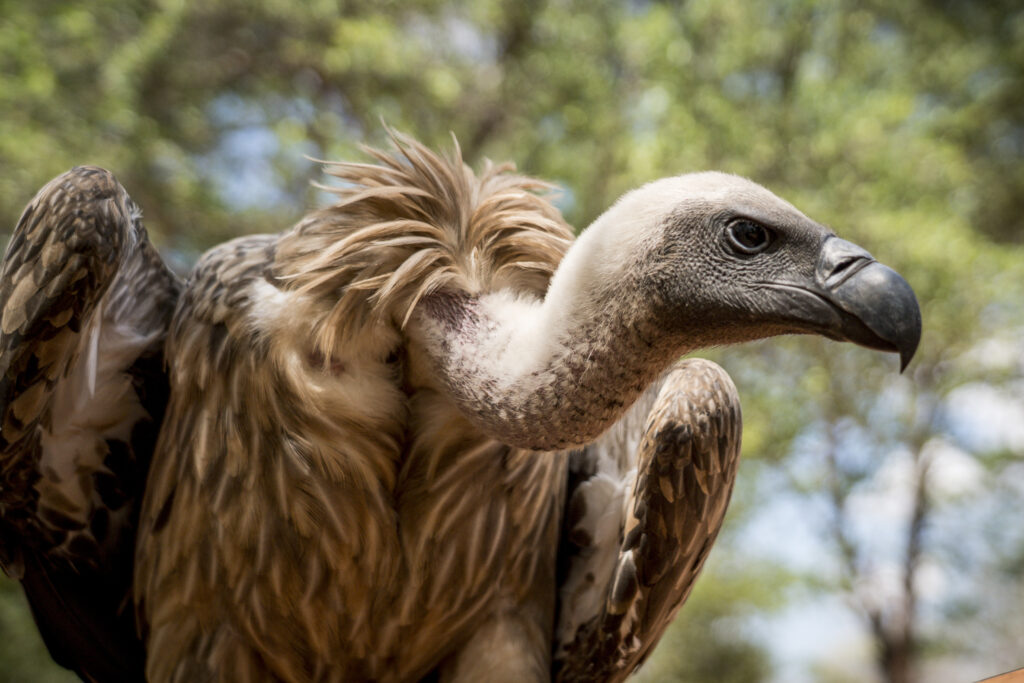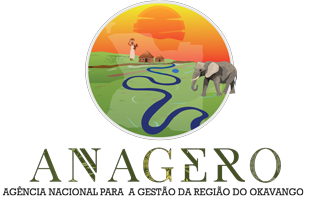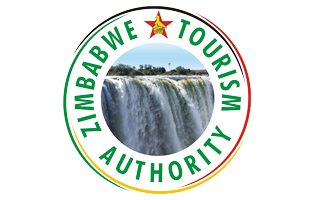You’re parked at a Hwange waterhole in the soft light of late afternoon, waiting. All seems quiet – doves flutter to and fro – but this is the calm before the storm. A strangled trumpeting from the treeline announces the first elephants. Soon they’re emerging by the dozen, trunks raised and ears flapping. Youngsters are first to the water. Behind them, more and more appear: stately matriarchs, excited infants. You quickly lose count – and still they arrive: some stopping at the edge, extending trunks to drink; others piling straight in, their dusty greys transformed to shiny black in a noisy ecstasy of splashing and wallowing.
Elephants are undeniably the big ticket in Zimbabwe’s premier national park. Their dry-season waterhole gatherings are as impressive as anywhere in Africa: over 44,000 have been recorded in the park. Many have travelled from as far as Chobe in Botswana, moving across one of KAZA’s key wildlife dispersal areas. Hwange’s huge buffalo herds, often over a thousand strong, make similar treks.
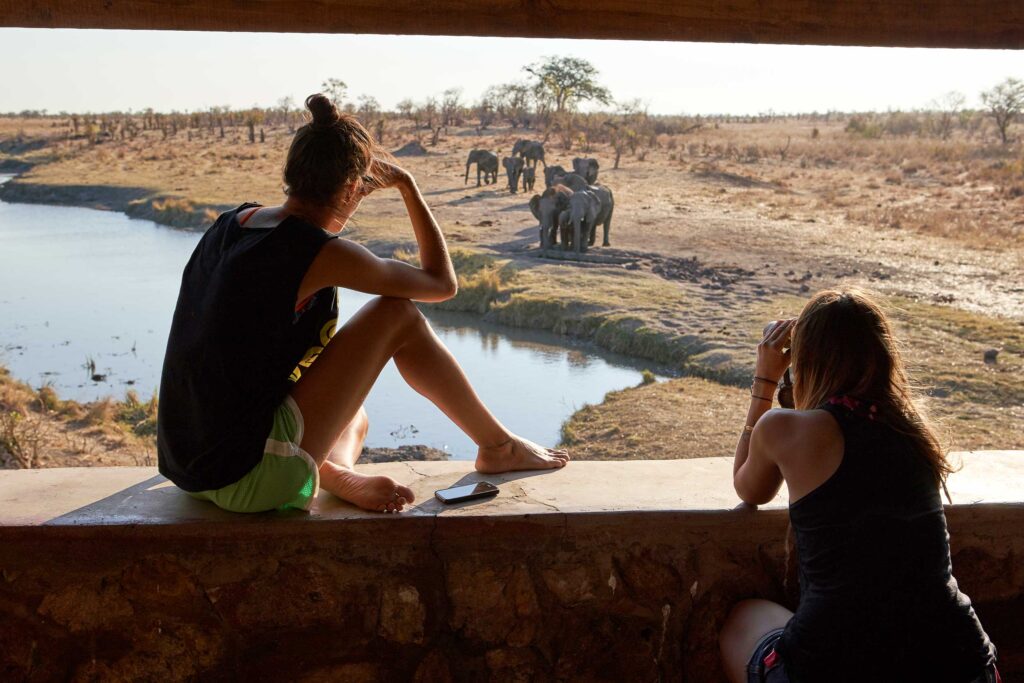
Hwange National Park lies around 100km due south of Victoria Falls in Zimbabwe’s northeast corner. The country’s largest and oldest national park, established in 1928, its 14,600 km2 are spread out across Kalahari sands, with habitats grading from Zambezi teak forests in the east to mopane woodland in the west. In places, the dense bush opens into low-lying grasslands, and in the north it is punctuated by large granite outcrops, offering panoramic views. Other than the Deka and Lukosi rivers in the northwest, there are few waterways. However, grassland areas form seasonal wetlands during the rains, while manmade dams and springs pumped by park authorities provide enough permanent water to support a few hippos and crocodiles, and to sustain the great herds when they arrive.
The park’s prolific biodiversity includes over 100 mammals and 400 bird species. As well as elephant and buffalo, there are plentiful giraffe, zebra, blue wildebeest, greater kudu and, of course, impala. Sable and roan are among the more notable antelope, the former occurring in good-sized herds. Among the large predators are some impressive lion prides, noted for hunting elephant calves, while a small but healthy population of African wild dog is the focus of an excellent conservation centre just outside the park’s main entrance. Cheetah roam the open grasslands, leopards occur throughout and, in addition to spotted hyenas, the park’s elusive brown hyenas reflect its Kalahari influences.
If you’re planning a visit, be aware that Hwange’s attractions are highly seasonal. Just as herds gather during the dry season, so they disperse during the rains, when the dense bush can make wildlife-viewing challenging. Nonetheless, the park remains a viable self-drive destination for the independent traveller, with several public camps and all-weather roads. Those after more luxury might seek out one of the private camps, located both inside the park and in its neighbouring private concessions, which offer an excellent safari experience – especially during the dry season, when game-viewing on the open plains of the south-eastern Ngweshla region can be spectacular.
Whenever you go, the park is never crowded and you will often enjoy sightings all to yourself. Besides, large mammals are not the only drawcard. Hwange’s diversity of habitats means a corresponding diversity of wildlife, and patience is often rewarded with something special, be it bat-eared foxes or even a pangolin. Birding is always excellent, with Kalahari species such as pied babbler and violet-eared waxbill spicing up the savannah woodland selection and a prolific variety of raptors.
Hwange is not without its challenges. Poaching in recent times has taken its toll on some large mammal populations while, conversely, rising elephant numbers may be having a damaging impact on the wider environment. KAZA is working closely with the local community to address these challenges, and to ensure that conservation is working for people and wildlife alike.
